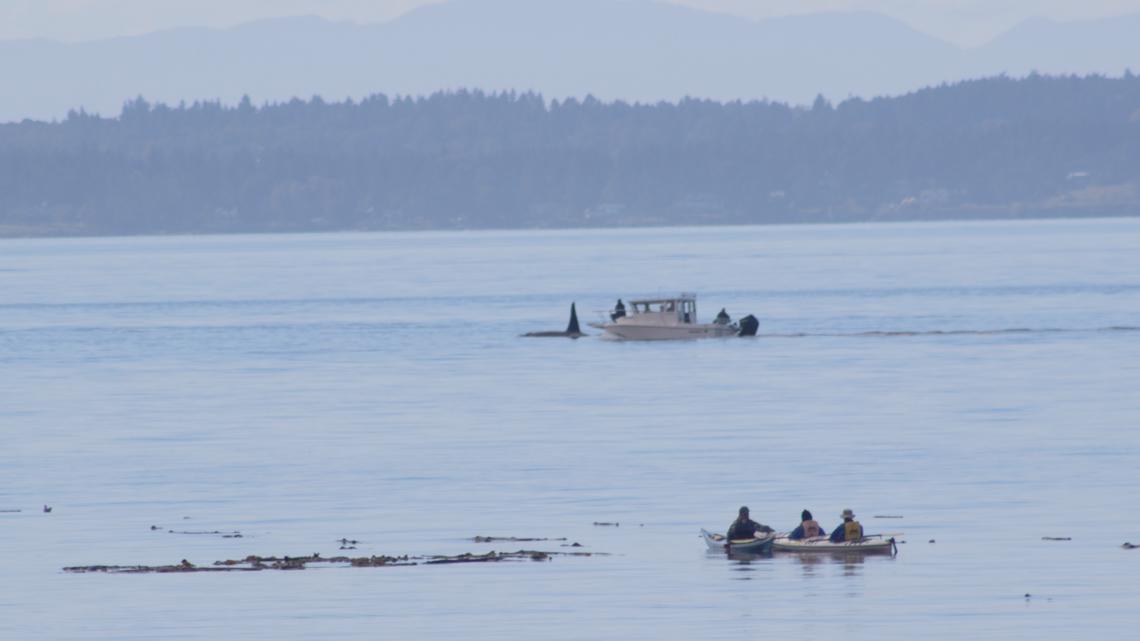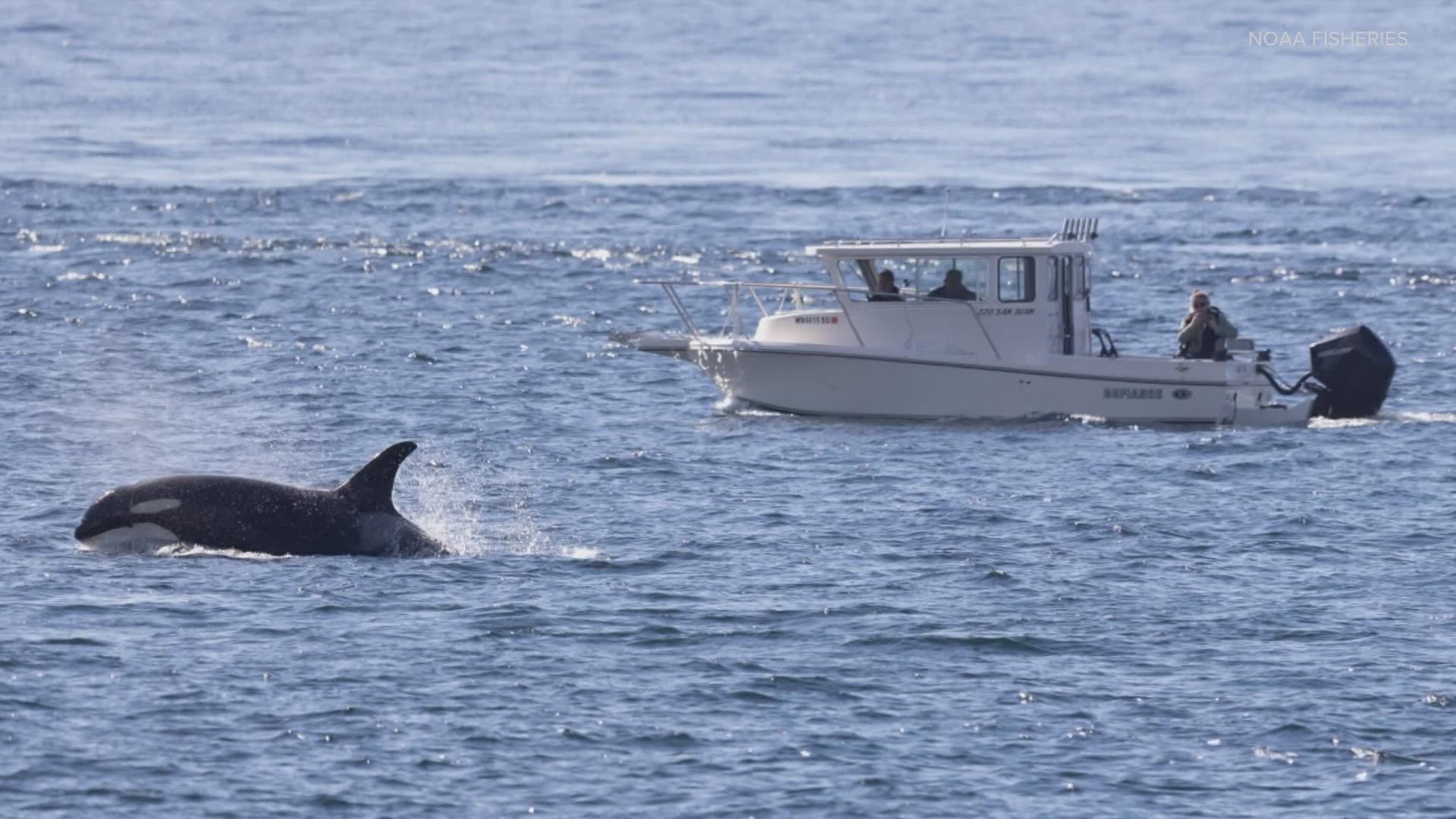Two recreational boaters agreed to pay fines for illegally approaching endangered Southern Resident orcas in rented boats near San Juan Island last fall, according to the National Oceanic and Atmospheric Administration (NOAA).
Whale watchers on shore reported the violations by using BeWhaleWise along with photographs and details to help law enforcement identify the boaters involved. Officers learned the names of the boaters involved after contacting the companies that rented the boats.
By law, recreational boats must stay at least 300 yards to the sides of the orcas and at least 400 yards in front and behind the endangered animals. Regulations require vessels slow to less than 7 knots within a half nautical mile of the whales and disengage engines within 300 yards.
Research from the NOAA indicated boat traffic within 400 yards can interrupt deep-water foraging by the whales that includes capturing prey. Female whales may stop foraging entirely when boats approach that closely, the NOAA found in its research.
"They use echolocation to find their food and the noise that vessels produce can mask their echolocation calls, making it harder for them to hear that echo that comes back off of the fish. It's primarily the noise we're concerned with," NOAA Natural Resource Management Specialist Grace Ferrara said.
Killer whales, a species native to the Northwest, are considered one of nine national marine species at high risk of extinction and in need of focused and urgent recovery actions, according to the NOAA Fisheries.
Southern Resident orcas spend several months of the summer and fall each year in Washington state's Puget Sound.
The region's population compromises of three family groups of whales that have been named J, K, and L pods, but the size of each pod has reduced between 1965-75 due to captures for marine parks.
As such, the NOAA said the Southern Resident population has "fluctuated considerably," peaking at 97 animals in 1996 and reaching 79 in 2001. Now the population has declined to 73 animals in Puget Sound, according to the NOAA.
Scientists believe reduced quantity and quality of prey, noise and disturbance from vessels and organic pollutants causing immune or reproductive system dysfunction can be traced back to the whales' decline in population.
“People can help us by spotting suspected violations and providing as much information as they can as soon as possible,” said Greg Busch, assistant director of the West Coast Division of NOAA’s Office of Law Enforcement. “It is important for boaters to know the rules before they get on the water. The more people who know the rules and help identify violations the better protected the whales will be.”


This was not the first instance in the past two years where boaters have illegally approached endangered orcas.
A yacht off the west side of San Juan Island was reported within 100 yards of J Pod on Sept. 30, 2021, according to NOAA. J Pod is one of three pods of endangered Southern Residents in Puget Sound.
Monika Wieland Shields, director of the Orca Behavior Institute on San Juan Island, helped officers connect the vessel to a yacht charter company that rented it to an Entiat, Washington resident.
“There are respectful ways to view whales from a vessel, but when there's an intentional and egregious violation, it's very important to report it,” Shields said. “It was difficult to watch, but I'm grateful enforcement was able to follow up to make sure that such disregard for the whales has consequences.”
The boater said he did use the yacht too close to the whales, but admitted he had not been aware of the distance regulations at the time because the rental company did not inform him of the federal and state guidelines, according to NOAA. He agreed to pay a $300 fine for the violation.
A few weeks later, NOAA said two witnesses identified a recreational boat on Oct. 4, 2021, that was operating less than 200 yards from the whales. A kayak guide told authorities the boat approached the orcas within 100 yards and had engines running.
Officers connected the boat to an Anacortes boating club that provides access to boats similar to a timeshare. While the company provided information on whale viewing regulations, including a whale warning flag and QR code linking to an educational video, the boater told officers he did not look at the information before using the boat.
The NOAA said the boater admitted to operating the vessel but claimed the engine was off near the whales. Photographs captured by witnesses revealed the boat creating a wake, indicating it was moving forward.
The boater was fined $3,000 before he admitted liability in exchange for a reduced penalty of $2,700. The NOAA said the different fines reflected the differences in how the boats approached the endangered whales' space.
If reporting a violation, witnesses should submit photos of the activity along with the boat's identifying factors to BeWhaleWise.org.

